Author
Theresa Seininger
Published on 01.01.2024
From the business magazine "Workflow"
01/2024 Team Spirit
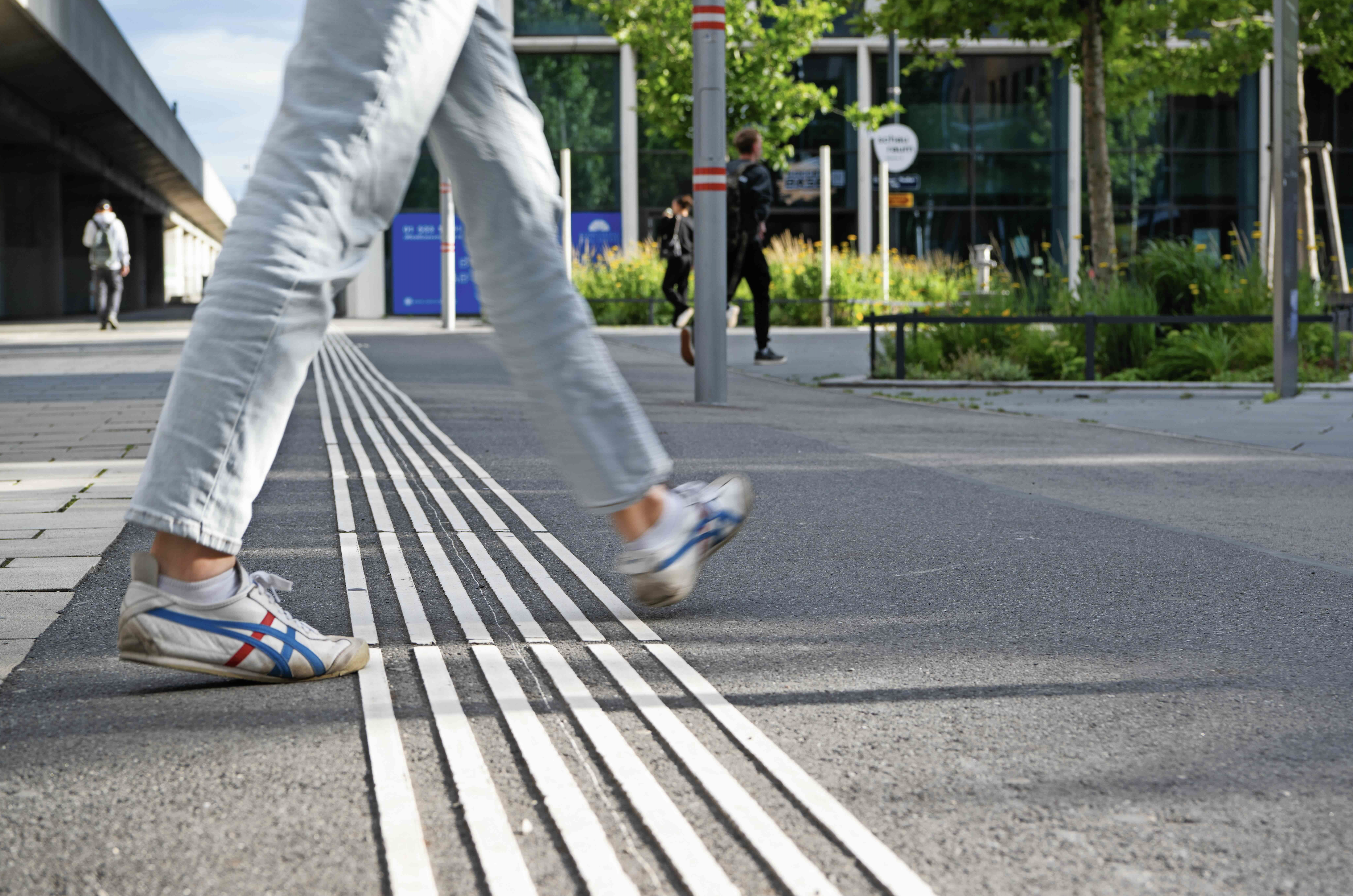
Experience the world as someone who sees little or nothing at all: this has been possible in Seestadt for about half a year. The well-known brand "Dialogue in the Dark" has set up shop on Barbara-Prammer-Allee and invites visitors to explore around 500 square meters of exhibition space—where, fittingly, there is nothing to see.
We start our journey into darkness from a bright foyer on the first floor, furnished with lots of wood and overlooking Elinor-Ostrom-Park. Each visitor takes a white cane from a box and follows a visually impaired or blind guide into the installation. Beforehand, staff advise you to keep your left hand on the wall to notice when you turn a corner or go up or down. The use of the cane is briefly explained, and you are asked to listen carefully to your guide. Then it begins. The small group of up to eight people follows guides like the blind Mekonnen Tiruneh through pitch-dark corridors, feeling their way along the walls, experiencing a park atmosphere and a city scene, sensing a bicycle or a trash can, and arriving at a bar where you can even order a drink and see if it tastes more intense here. Because of the darkness, the sound of a waterfall and the noise of cars are perceived more clearly and intensely. Not too much should be revealed—each visitor should discover for themselves what obstacles lie in their path. But anyone who leaves the exhibition will certainly have a greater understanding of what it’s like for people who see little or nothing at all.
New Location
Why did “Dialog im Dunkeln” choose the premises in Seestadt as its new location about half a year ago? “We had previously been in a location in the first district for 14 years, but it no longer met the requirements for event venues. When we started looking for alternatives, we didn’t actually view many places, but decided very quickly on the space on Barbara-Prammer-Allee,” says managing director Eva Kriechbaum. “Here, we not only have almost 700 square meters available for the exhibition and our ancillary rooms, but also all the advantages of a new building and an urban development area.” Originally, the space was intended for a co-working space, as there are already several in Seestadt.
But it was quickly repurposed for “Dialog im Dunkeln”: “For us, it was great that when we came here, we could still help shape a lot and had plenty of flexibility, because the premises were still under construction,” says Kriechbaum. They then looked at how the existing exhibition, which is operated under license from Germany, could be integrated into the space: “That worked out very well, we didn’t have to change the storyline of the exhibition and had to adapt very little overall.”
Help
Why did “Dialog im Dunkeln” choose the premises in Seestadt as its new location about half a year ago? “We had previously been in a location in the first district for 14 years, but it no longer met the requirements for event venues. When we started looking for alternatives, we didn’t actually view many places, but decided very quickly on the space on Barbara-Prammer-Allee,” says managing director Eva Kriechbaum. “Here, we not only have almost 700 square meters available for the exhibition and our ancillary rooms, but also all the advantages of a new building and an urban development area.” Originally, the space was intended for a co-working space, as there are already several in Seestadt. But it was quickly repurposed for “Dialog im Dunkeln”:
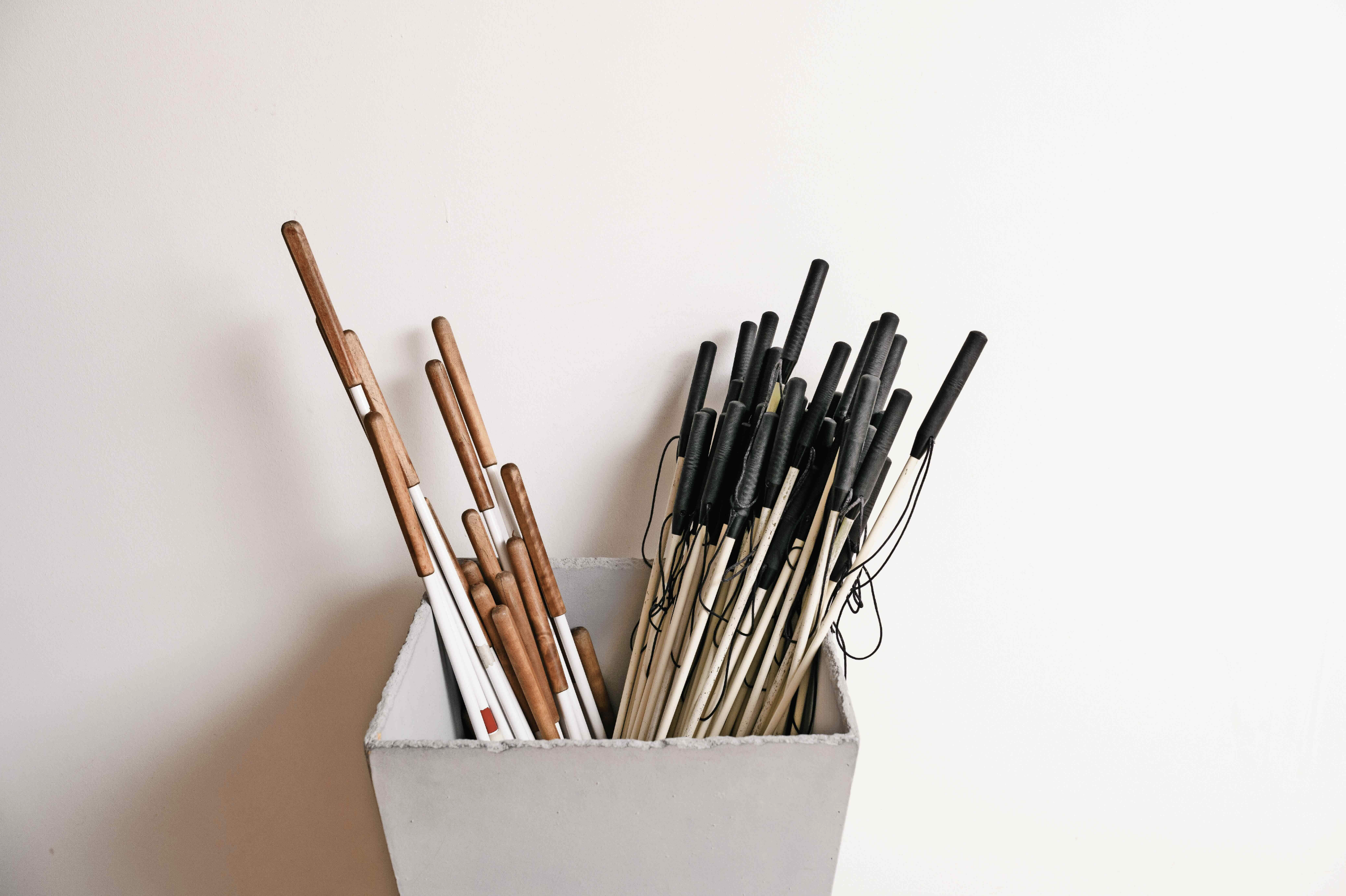
“For us, it was great that when we came here, we could still help shape a lot and had plenty of flexibility, because the premises were still under construction,” says Kriechbaum. They then looked at how the existing exhibition, which is operated under license from Germany, could be integrated into the space: “That worked out very well, we didn’t have to change the storyline of the exhibition and had to adapt very little overall.”
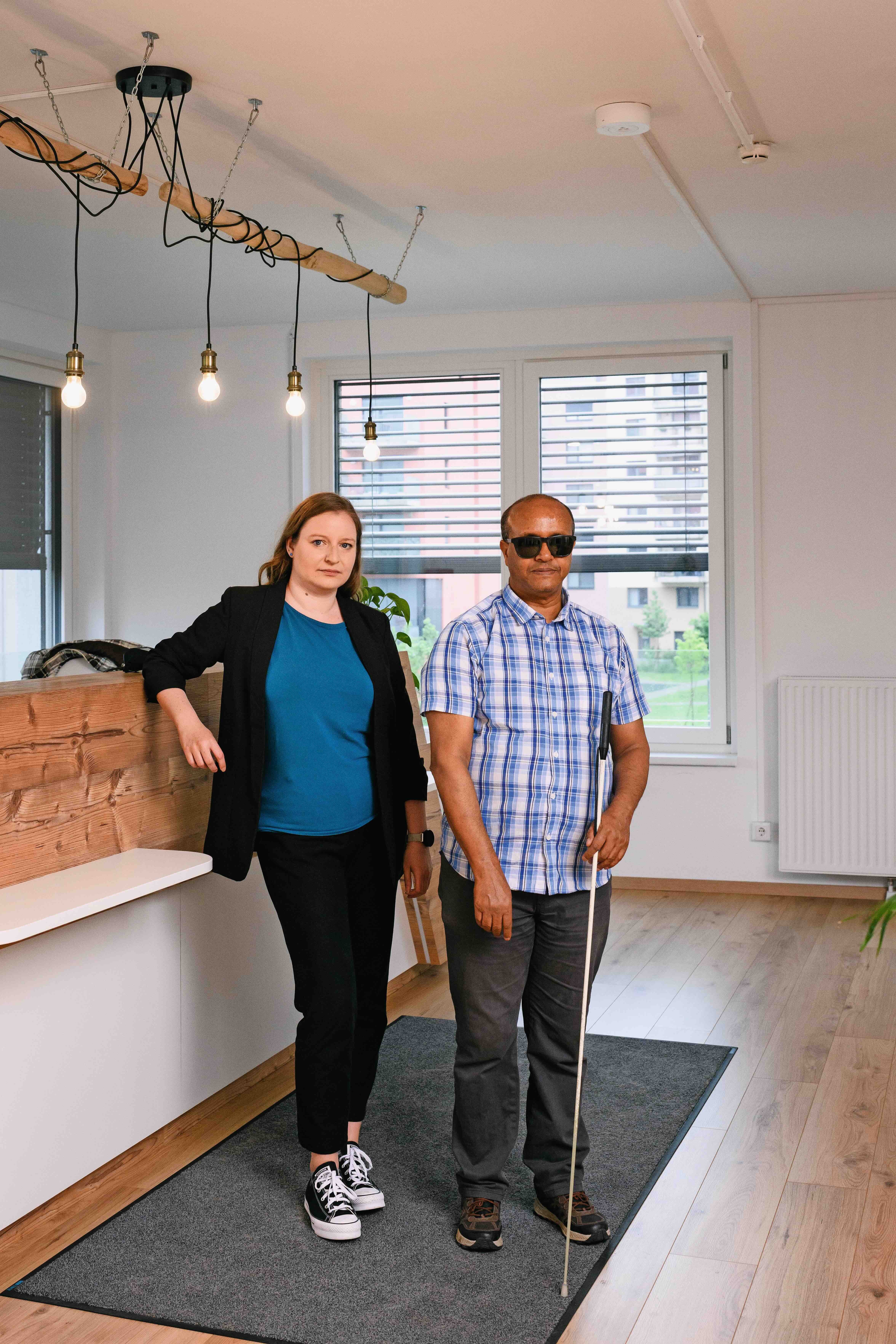
Managing director Eva Kriechbaum and one of the guides who lead visitors in small groups through the completely darkened rooms.
In the Dark
For the managing director of the “Dialog im Dunkeln” branch, it was also important that the location is well situated: “We are very easy to reach, as we are only a few minutes from the U2 station.” The exhibition mainly attracts school classes—many of them on a Vienna week—but also private individuals, clubs, or company employees who want to experience something together away from everyday work. “School classes especially appreciate that they can let off steam in Elinor-Ostrom-Park before and after visiting the exhibition.” At the same time, it was important to the operator to “be one of the first cultural offerings here in Seestadt,” as she says.
“The idea of settling in a developing urban area was very attractive to us—and to already be here when Seestadt becomes even more established and attracts with even more highlights like shopping and gourmet options. We saw it as a great opportunity to move into a growing city early on.”
Openness of the visitors
At the same time, the mentality she perceives here in Seestadt fits perfectly with the idea behind the social education project, as Kriechbaum emphasizes: "The people who live here not only enjoy coming to our exhibition themselves—we have many visitors from Seestadt. But beyond that, many locals quickly got to know us and were always happy to bring groups who might have asked for directions to us." In general, she senses a strong openness among Seestadt residents: "We are an exhibition that tells stories about being different and wants to make this tangible—and I have noticed this willingness to show tolerance here in Seestadt from the very beginning."
Moving to Seestadt was also a positive change for the staff of "Dialogue in the Dark," says Kriechbaum: "Some of us enjoy spending our lunch breaks by the lake or in the park in front of the building. Having our base in Seestadt has greatly improved the quality of life around the workplace." For those working as guides, the new surroundings were introduced by accompanying them from the subway station to the location on Barbara-Prammer-Allee. "On our side of Seestadt, tactile guidance systems will be further expanded in the future, while on the other side of the U2 station, many such lines already exist. These make it easier to find your way with a cane. Our guides are looking forward to when this will also be the case up to Barbara-Prammer-Allee," says Kriechbaum. Strong contrasts, such as those at the subway station, already help visually impaired people with orientation, she explains. In general, in Seestadt, it is easy for those with partial sight to distinguish between the street and the sidewalk. She also finds, based on the experiences of her guides and visually impaired acquaintances, that the wide sidewalks in Seestadt contribute to good coexistence: "If someone with a white cane comes toward me, it’s much easier to step aside and make room here in Seestadt, where the sidewalks are so wide, than in the historic center, where this can sometimes be a problem."
When it comes to accessibility, you always have to consider many different interests in a developing urban area, as Kriechbaum points out: "While curbs are an obstacle for people in wheelchairs and those with strollers, they are orientation points for people with visual impairments. Of course, you can’t always please everyone at the same time, but we are glad that blind and visually impaired people are also considered in the planning here in Seestadt." She adds: "For us, accessibility is not just about whether there are sidewalks or guidance lines." Rather, says Kriechbaum, "it’s also about the people who live around the location—and we quickly noticed that many Seestadt residents have a very positive attitude toward us. They understand and welcome our motivation to introduce people to the world of the blind and visually impaired."
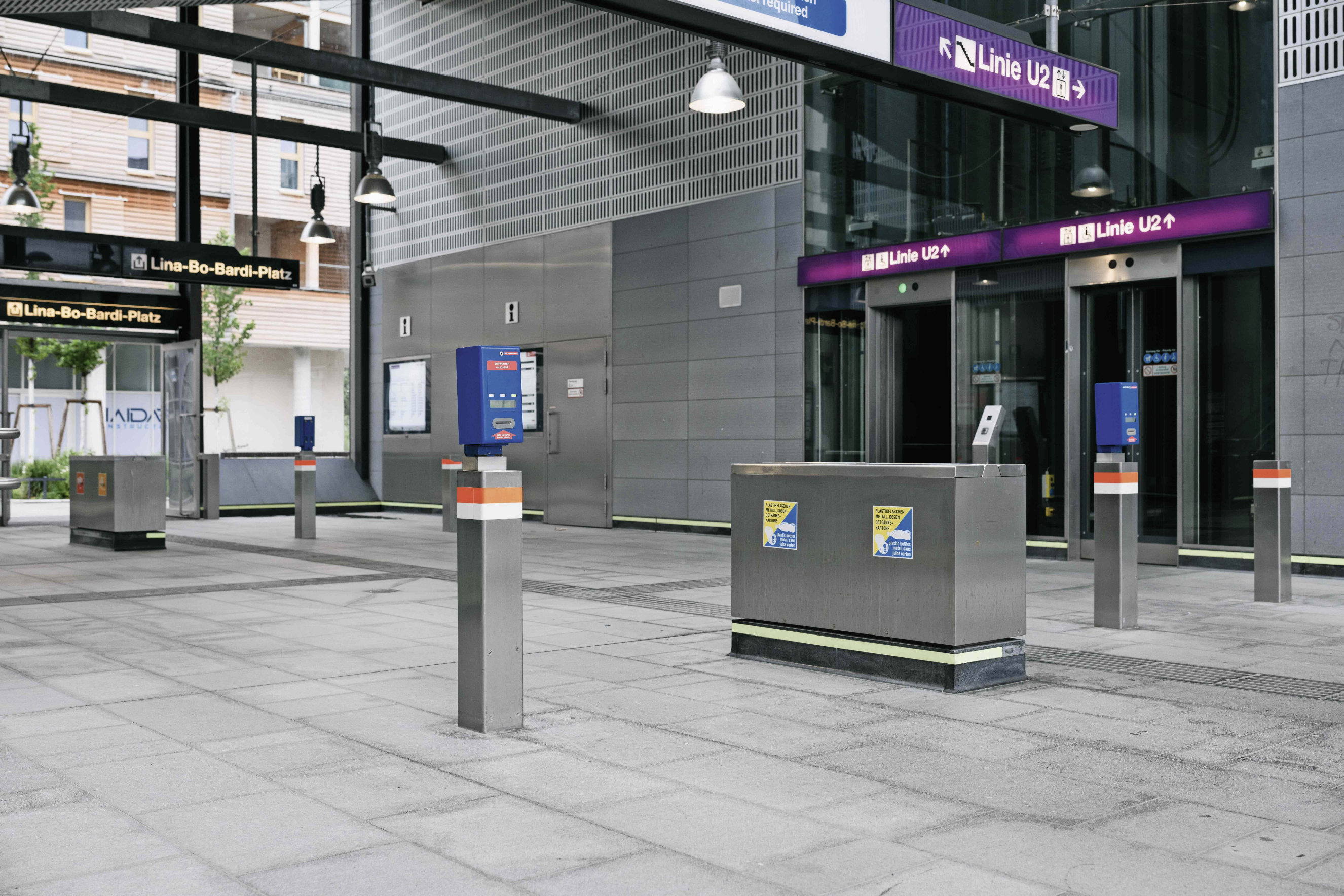
Helpful. The strong contrasts, for example at the subway station, prove to be useful orientation aids. © Caio Kaufmann
Social Inclusion
For “Dialogue in the Dark”, it is of course an advantage to have established itself well in Seestadt, with around 40,000 visitors coming to the exhibition each year. “Dialogue in the Dark” receives no subsidies but is able to finance itself through ticket sales. Only personal grants are received, and there is also the option to employ civil servants. The licensor is a German company; Andreas Heinecke founded the brand as a social franchise in the late 1980s. Since then, the lightless installation has existed in more than 30 countries and around 130 cities, attracting more than ten million visitors worldwide.

Eye contact. When you travel to Seestadt by subway, the exhibition immediately catches your eye. © Luiza Puiu
The Austrian managing director Eva Kriechbaum joined “Dialogue in the Dark” in 2006 through a student job. In 2009, after her predecessor’s bankruptcy, she helped reestablish the license, and since 2017 she has held a management position. She has long been committed to the idea of “Dialogue in the Dark”; her goal is to live social inclusion and to “demonstrate” to visitors how someone who cannot see finds their way and what challenges they face in nature and urban environments. “Of course, it should also be fun to feel in the dark which objects are in front of you, but above all, we want to raise awareness and understanding for people with visual impairments and their needs,” says Kriechbaum. “We want visitors to get to know and understand their realities of life.”

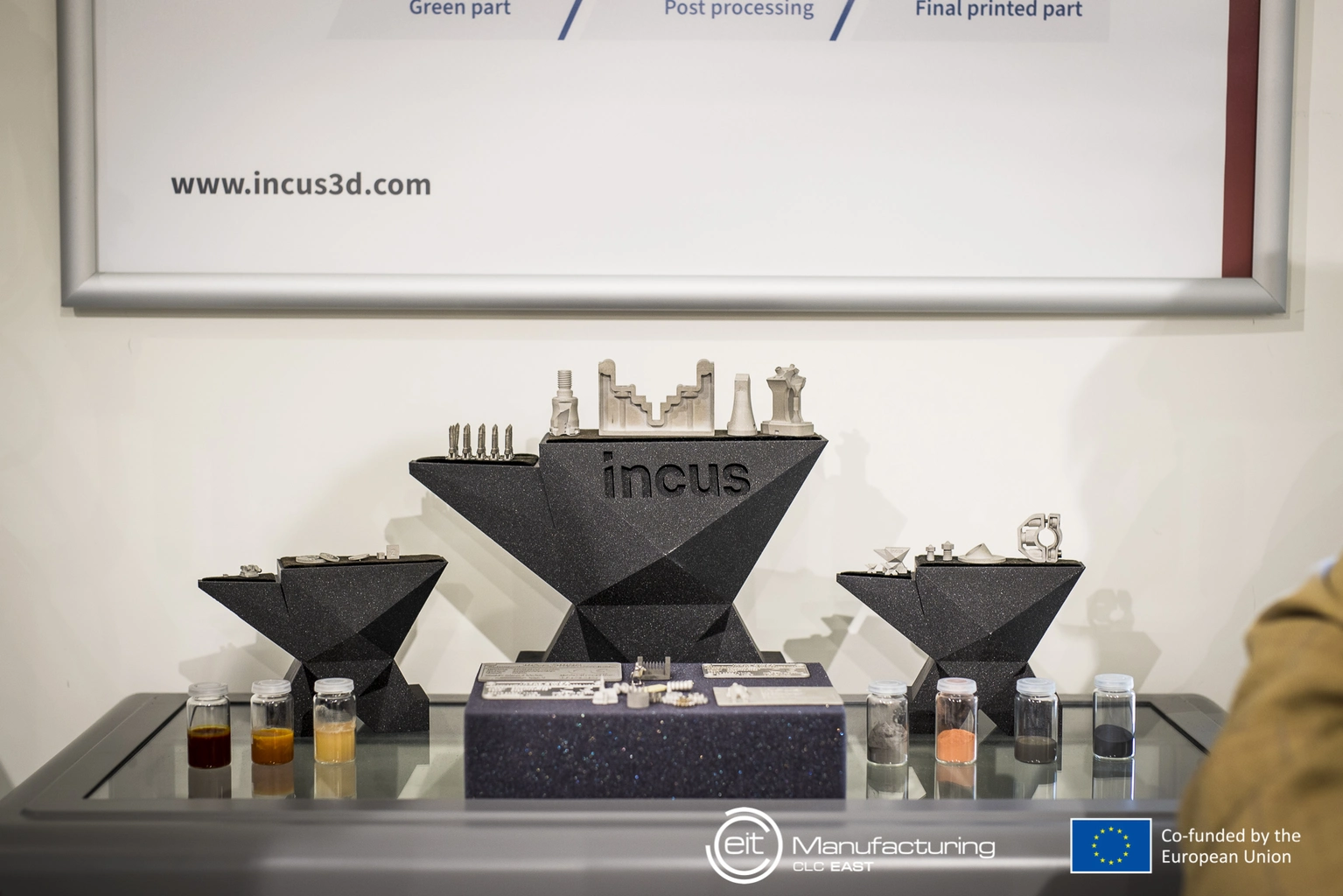



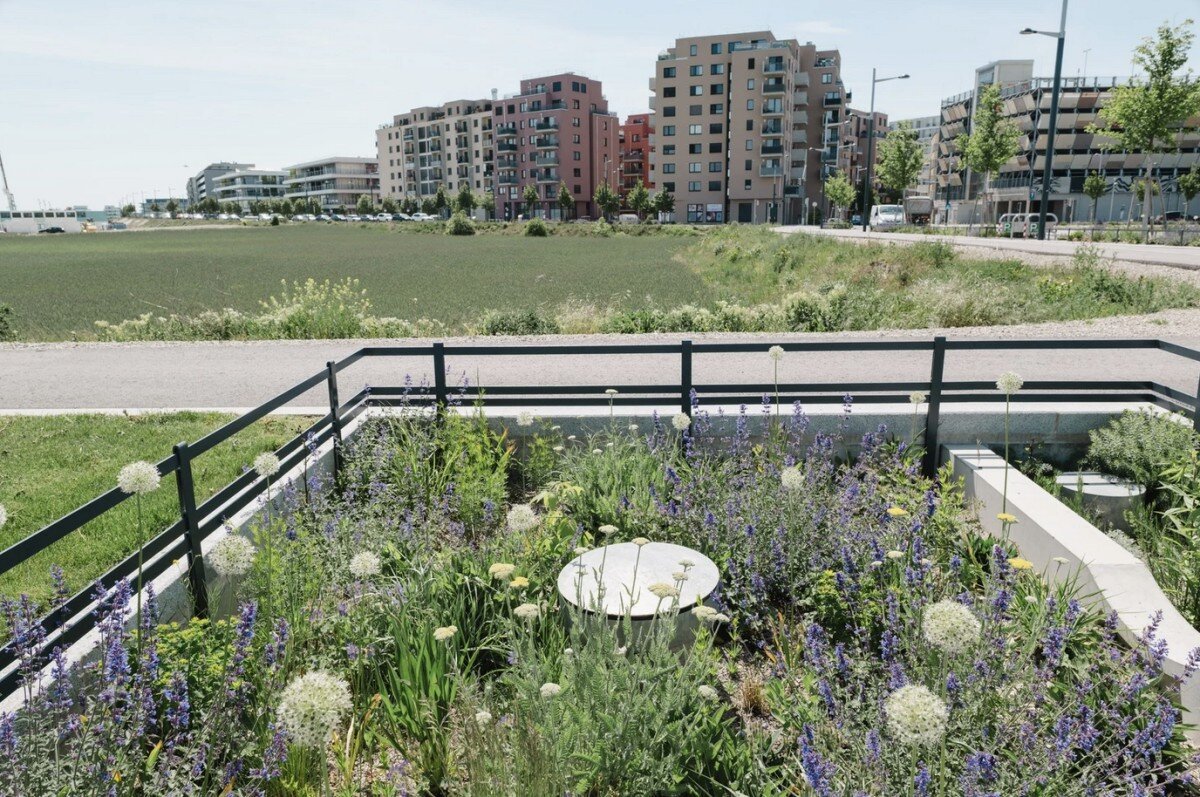
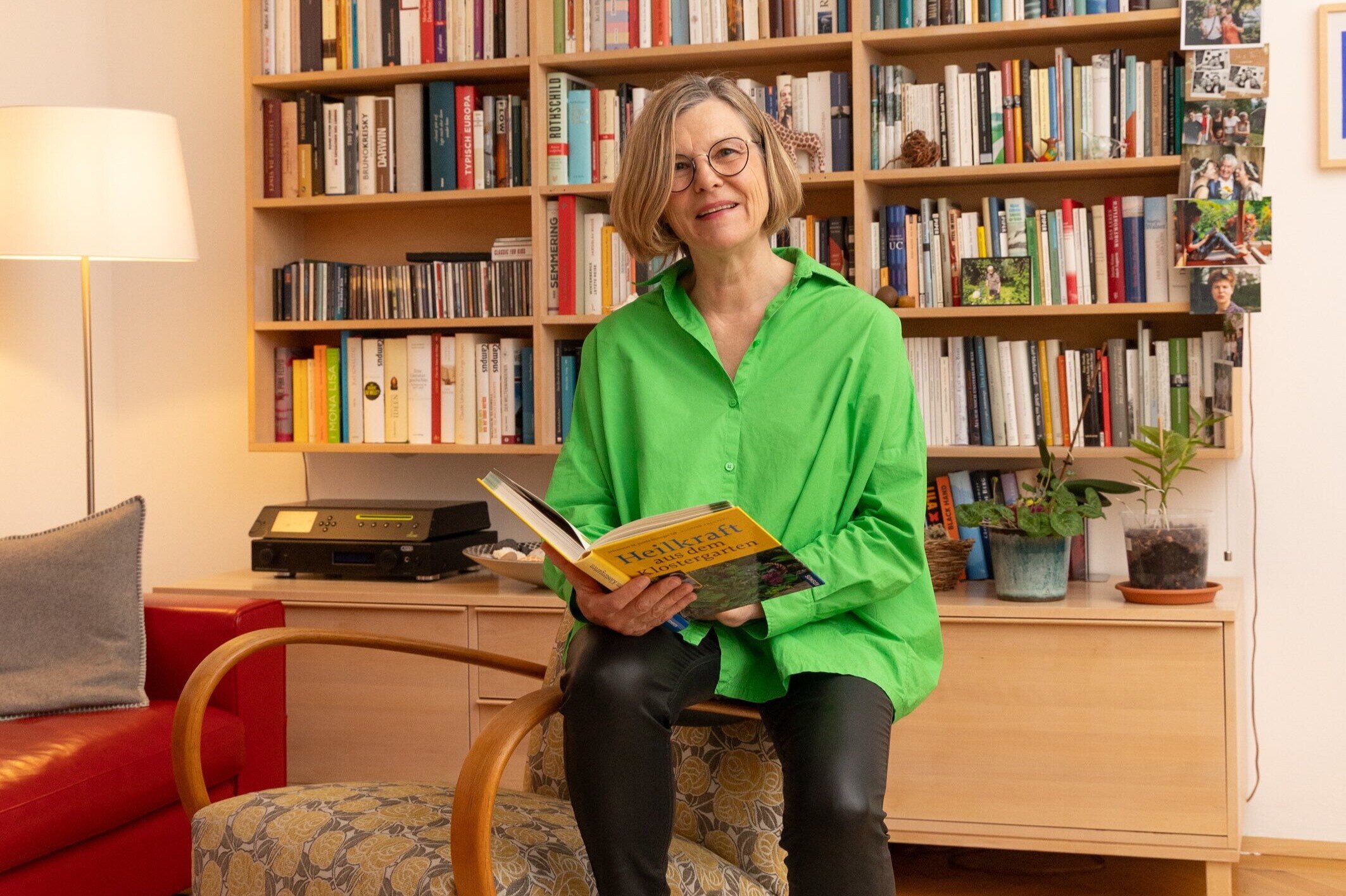
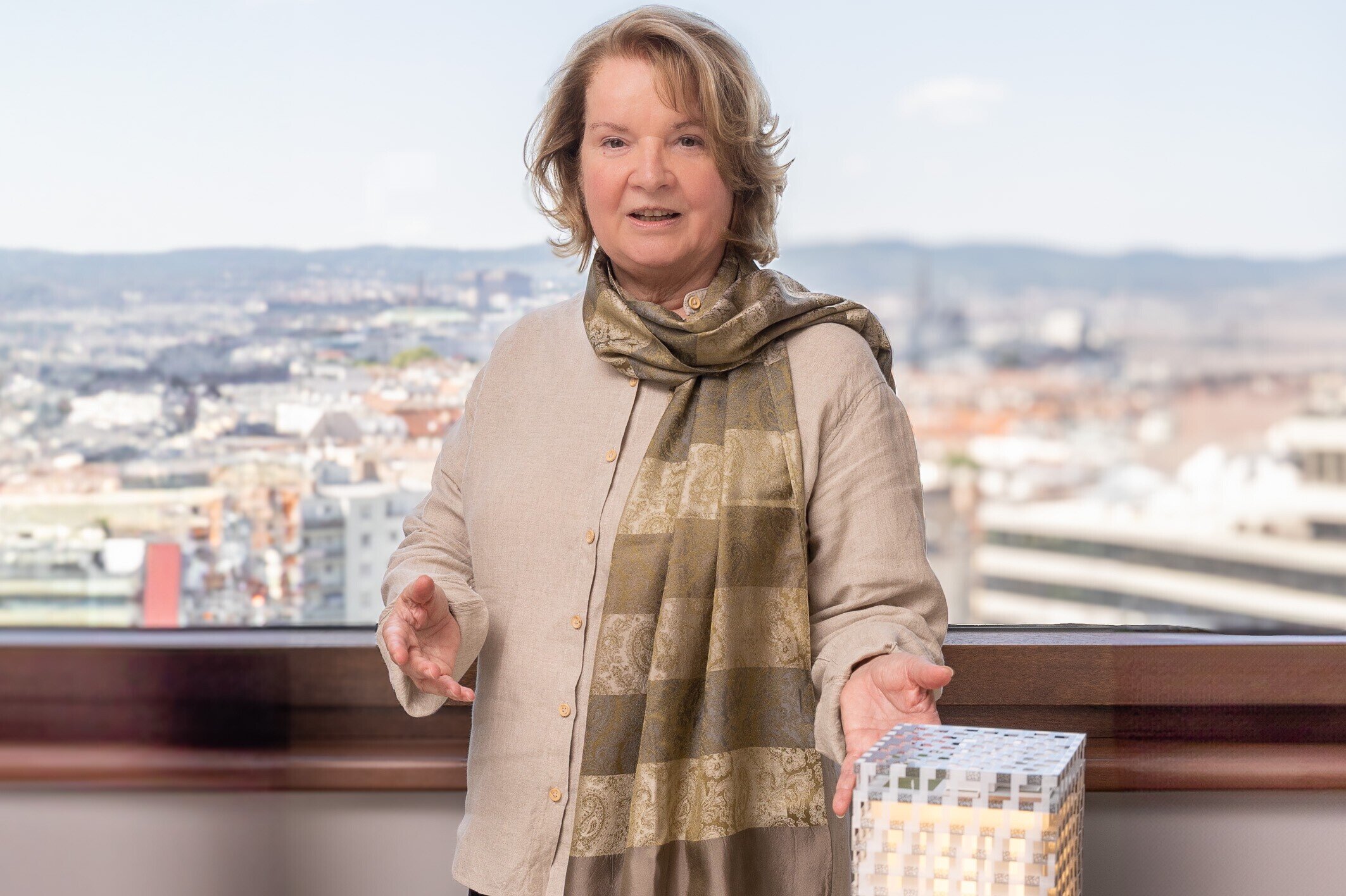



Dialogue in the Dark
The only exhibition where there is nothing to see. Reservation required: 01 / 890 60 60
Opening hours:
Tuesday (every 2nd): 09:00–18:00
Wednesday–Friday: 09:00–18:00
Saturday: 11:00–18:00
Sunday (every 2nd): 13:00–18:00
Monday: closed
Public holiday (except Monday): 12:00–18:00
imdunkeln.at